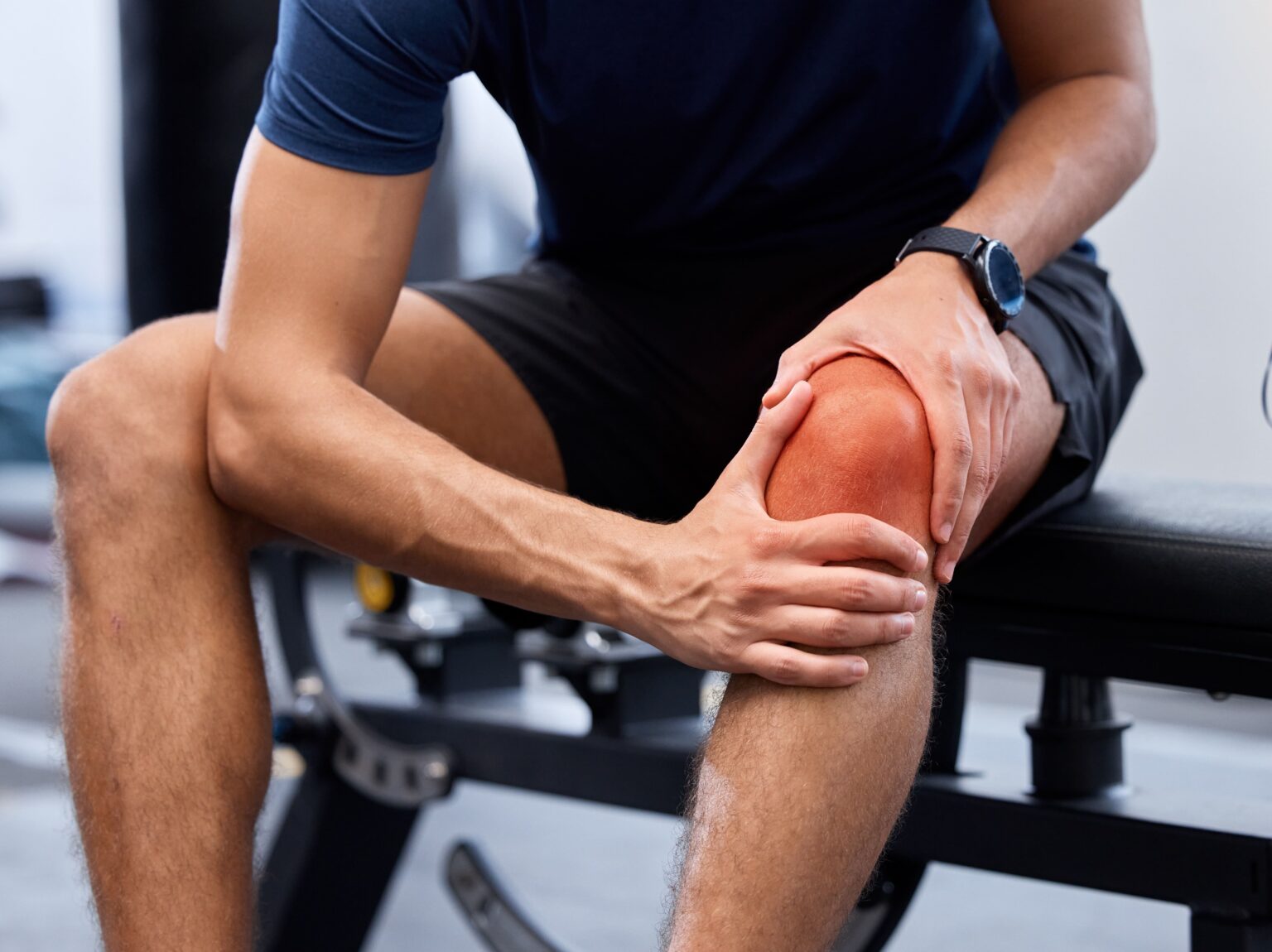SCHEDULE AN APPOINTMENT WITH US
Are Your Symptoms Affecting Your Quality Of Life?
Consult our MOH-accredited orthopaedic specialist for a detailed consultation & personalised treatment plan today.

Knee bursitis is an inflammatory condition affecting the bursae – small, fluid-filled sacs that provide cushioning between muscles, tendons, and bones in the knee.
When one or more bursae in the knee become irritated or inflamed, the area may swell, become tender, and cause pain, especially during movement. This condition is commonly seen in those who kneel for extended periods or engage in repetitive knee movements, such as athletes and manual labourers.
Knee bursitis presents with several symptoms that may vary depending on the affected bursa and the degree of inflammation. Common symptoms include:
Swelling is often the first sign of knee bursitis, visible as a rounded bump over the knee area. The affected area may feel warm and appear slightly red, especially if inflammation is significant.
Pain is commonly felt at the front, inner side, or back of the knee, depending on which bursa is inflamed. The pain may worsen with movement or direct pressure, such as kneeling or bending.
Swelling and pain may restrict knee movement, making it difficult to fully bend or straighten the knee. Stiffness in the knee joint may also develop, particularly after extended periods of inactivity.
Knee bursitis results from inflammation of the bursae around the knee, which can be triggered by several factors. Common causes include:
Knee bursitis is classified based on which bursa is affected, as this determines the location and severity of symptoms.
Inflammation of the bursa located at the front of the knee, over the kneecap. This type commonly results from frequent kneeling or direct trauma and often leads to visible swelling.
Affects the bursa located just below the kneecap, typically due to repetitive jumping or running. Pain is usually localised beneath the kneecap.
Inflammation of the bursa on the inner side of the knee typically occurs in people who engage in activities that stress this area, such as running or stair climbing.
Affects the bursa above the kneecap, often due to prolonged or repetitive knee movements. Pain and swelling occur at the top of the knee.
Diagnosing knee bursitis involves a physical examination and may include imaging tests or fluid analysis to confirm inflammation and rule out other conditions.
SCHEDULE AN APPOINTMENT WITH US
Consult our MOH-accredited orthopaedic specialist for a detailed consultation & personalised treatment plan today.
Treatment for knee bursitis typically begins with non-surgical approaches to reduce inflammation and relieve symptoms.
Reducing activities that place strain on the knee or avoiding high-impact exercises can help minimise irritation and give the inflamed bursa time to heal. Temporary changes to daily routines, such as avoiding prolonged standing or repetitive knee movements, are often necessary to aid recovery and prevent further aggravation.
Applying ice packs to the affected knee for 15-20 minutes at a time, several times a day can help decrease swelling and relieve pain. This method numbs the affected area and reduces inflammation, making it effective for treating acute symptoms.
A tailored physical therapy programme may be required for long-term relief and prevention of knee bursitis. Strengthening the muscles surrounding the knee joint provides better support, which reduces strain on the bursa. Therapy often includes exercises to improve flexibility and stability, ensuring the knee remains well-balanced and less prone to further injury.
Nonsteroidal anti-inflammatory drugs, such as ibuprofen or naproxen, are commonly used to manage pain and reduce inflammation. They offer a practical solution for temporary symptom relief, especially when combined with other conservative treatment methods.
Corticosteroid injections may be administered for persistent pain. They deliver anti-inflammatory medication directly to the affected bursa, providing temporary relief from pain and swelling. However, repeated use is limited due to potential tissue weakening.
When symptoms persist despite non-surgical treatment, surgery may be necessary. These include:
Bursa drainage (aspiration), is a procedure used to relieve pain and swelling by removing excess fluid from the inflamed bursa. A needle is inserted into the affected bursa to draw out the fluid, which often provides immediate symptom relief. Ultrasound guidance is commonly used to ensure the needle is accurately placed and to minimise the risk of complications. The fluid collected may be analysed for signs of infection or other underlying conditions.
Bursa removal (bursectomy) is a surgical procedure for chronic or recurrent bursitis. It involves removing the inflamed bursa, which helps eliminate pain and prevent future inflammation. It is often performed arthroscopically, using small incisions and specialised instruments. This minimally invasive approach typically results in less pain, fewer complications, and a shorter recovery period, with physical therapy often needed afterwards.
Preventing knee bursitis involves making adjustments to reduce stress on the knee joint, especially for those regularly engaged in activities that put pressure on the knees.
Using knee pads can minimise direct pressure on the bursae, while taking breaks during knee-straining activities helps alleviate continuous pressure.
Regular exercise to strengthen the muscles around the knee improves joint stability and stretching or warming up before physical activity reduces the risk of irritation.
Monday – Friday: 9.00am – 6.00 pm
Saturday: 9.00am – 1.00pm
Sunday & PH: CLOSED
Monday – Friday: 9.00am – 6.00 pm
Saturday: 9.00am – 1.00pm
Sunday & PH: CLOSED
Get Started
Knee bursitis is not usually serious but can cause significant discomfort and restrict movement. If left untreated, it may lead to chronic pain or, in rare cases, develop into an infection that requires prompt medical attention.
Yes, mild cases of knee bursitis can improve on their own with rest and reduced activity. However, more persistent or severe cases often require medical intervention to fully resolve.
Recovery from knee bursitis surgery, such as bursa drainage, typically takes about 2 to 3 weeks. For more extensive procedures like arthroscopic bursectomy, recovery may take around 4 to 6 weeks. Full recovery times can vary depending on individual healing rates and often include physical therapy to regain strength and mobility.